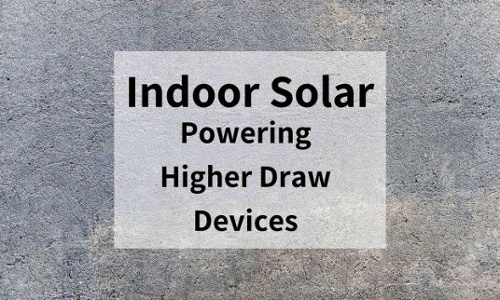Posted on 10/19/2018 at 12:00 by
Samuel Jones

In some cases, devices may require more power than a reasonably sized solar panel can produce. If the device doesn’t need to run continuously, a solar solution is usually still possible.
The simplest solution is to use a solar panel to charge a battery.
The battery can charge while the device is off, then provide adequate power when the device is on.
As long as the energy produced by the solar panel is greater than the average energy used by the device, the battery will be maintained.
Another simple method is to collect energy and then turn the device on once you have stored up enough to run the device. This pulse-like method works well with higher power consumption applications where the frequency that the device turns on is not critical.
The Solar Development Kit (DEV-BASIC) can be configured to implement this pulsing method. The video above shows a fan being powered using indoor solar.
This functionality is implemented by taking advantage of the load disconnect feature on the BQ25570 energy harvesting chip utilized by the Indoor Solar Development Kit.
The DC motor requires much more power than is available at indoor light levels. The workaround is to collect and store the available energy in a capacitor.
Once the capacitor is fully charged, the output to the DC motor is enabled and the fan will turn on.
To make devices run longer per pulse, a larger capacitor, which can store more energy, can be used.
The more energy collected, the more often the device will turn on. To make the device turn on more often, additional solar can be added or the device can be moved to a brighter indoor environment.
The Solar Development Kit is compatible with any of PowerFilm’s Indoor Light Series Electronic Component Solar Panels and is a great tool for experimenting and prototyping with indoor solar.
If you have ideas, projects, or devices that could benefit from indoor solar we can work together to develop the optimal solar solution for your application. Contact us or leave a comment below.